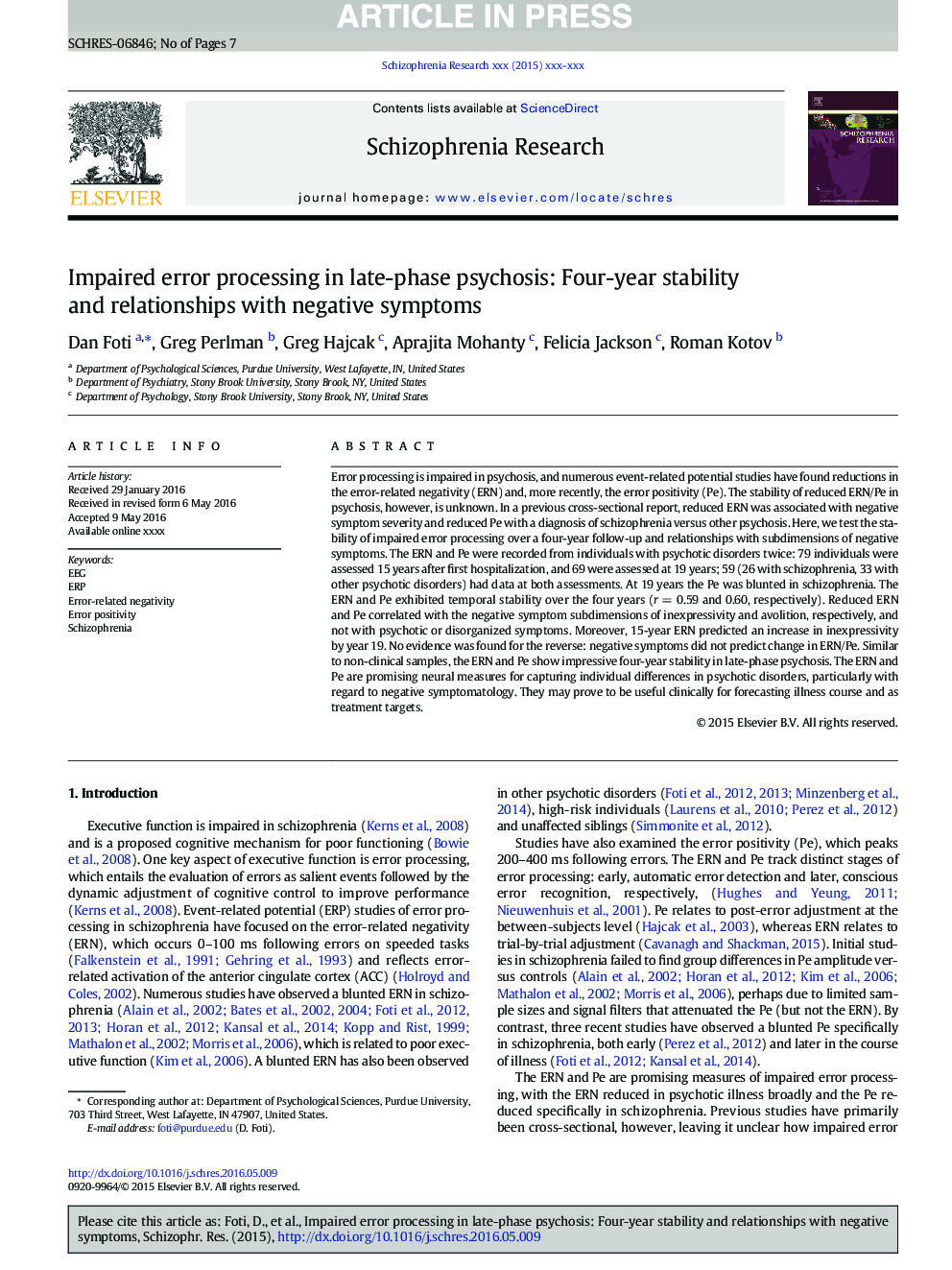| Article ID | Journal | Published Year | Pages | File Type |
|---|---|---|---|---|
| 4935225 | Schizophrenia Research | 2016 | 7 Pages |
Abstract
Error processing is impaired in psychosis, and numerous event-related potential studies have found reductions in the error-related negativity (ERN) and, more recently, the error positivity (Pe). The stability of reduced ERN/Pe in psychosis, however, is unknown. In a previous cross-sectional report, reduced ERN was associated with negative symptom severity and reduced Pe with a diagnosis of schizophrenia versus other psychosis. Here, we test the stability of impaired error processing over a four-year follow-up and relationships with subdimensions of negative symptoms. The ERN and Pe were recorded from individuals with psychotic disorders twice: 79 individuals were assessed 15 years after first hospitalization, and 69 were assessed at 19 years; 59 (26 with schizophrenia, 33 with other psychotic disorders) had data at both assessments. At 19 years the Pe was blunted in schizophrenia. The ERN and Pe exhibited temporal stability over the four years (r = 0.59 and 0.60, respectively). Reduced ERN and Pe correlated with the negative symptom subdimensions of inexpressivity and avolition, respectively, and not with psychotic or disorganized symptoms. Moreover, 15-year ERN predicted an increase in inexpressivity by year 19. No evidence was found for the reverse: negative symptoms did not predict change in ERN/Pe. Similar to non-clinical samples, the ERN and Pe show impressive four-year stability in late-phase psychosis. The ERN and Pe are promising neural measures for capturing individual differences in psychotic disorders, particularly with regard to negative symptomatology. They may prove to be useful clinically for forecasting illness course and as treatment targets.
Related Topics
Life Sciences
Neuroscience
Behavioral Neuroscience
Authors
Dan Foti, Greg Perlman, Greg Hajcak, Aprajita Mohanty, Felicia Jackson, Roman Kotov,
